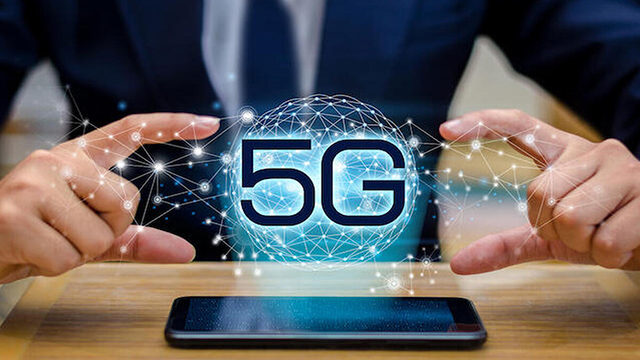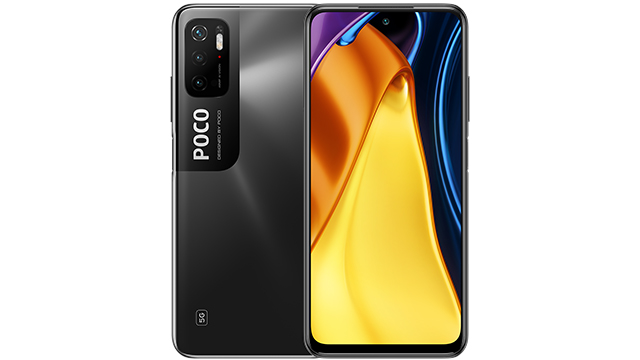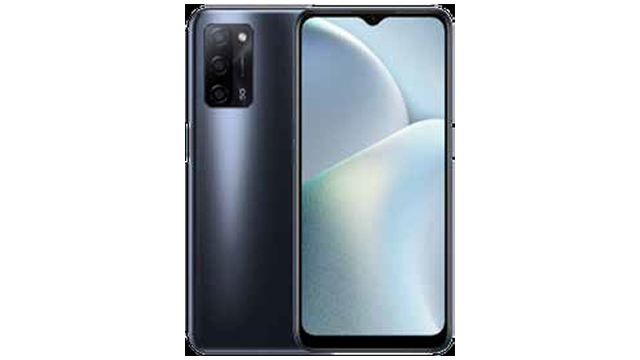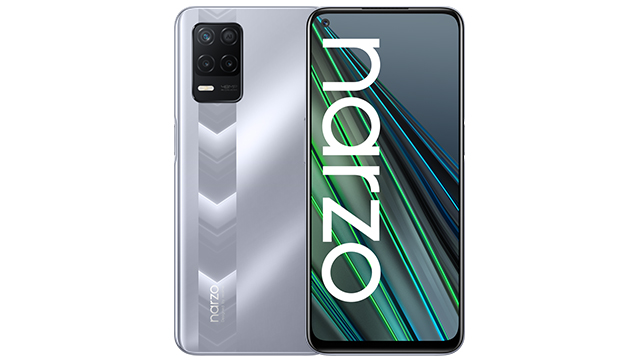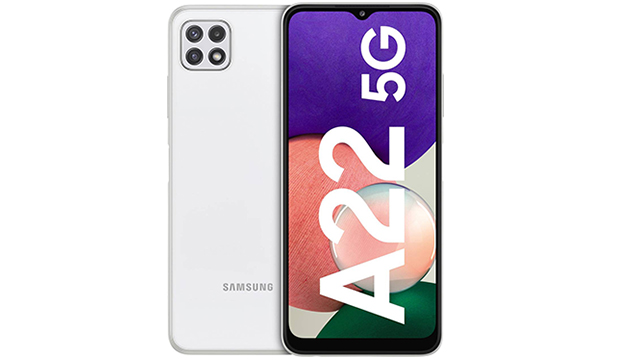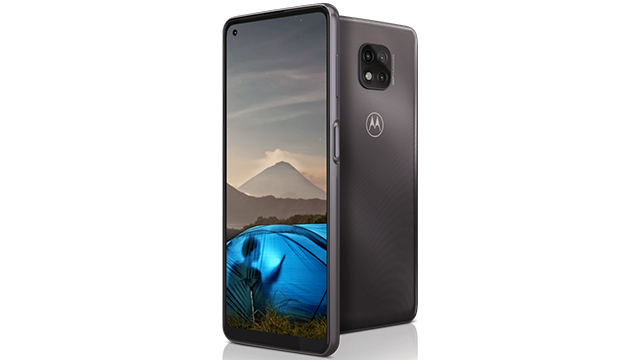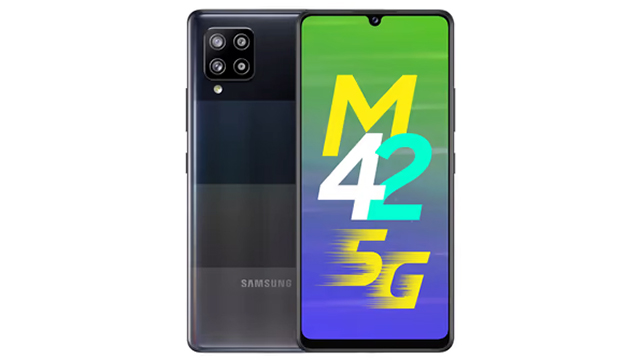5G is the cornerstone of the technology industry across the globe right now. Some countries have already deployed the next-generation of connectivity, while some are on the cusp of doing it. Effectively, the work behind the scenes is making sure that 5G hits the ground running, in whatever capacity possible. But all this talk about connectivity is incomplete if the device ecosystem fails to evolve and adapt to the upcoming changes.
Most of the latest smartphones launching in the market right now are 5G-enabled. And most of its credit goes to chipset makers such as Qualcomm, MediaTek and Samsung, who are developing the channels for a robust 5G roll out. Most analysts have talked about 5G phones costing a premium, which might be out of budget for a lot of consumers. But early trends have expedited the process, allowing phone makers to manufacture 5G devices that are not only reliable, but accessible to a wider crowd.
As highlighted by Deloitte in its 5G: The Catalyst to Digital Revolution in India report, by the year 2023, approx. 1 billion 5G devices are expected to be connected worldwide. And Counterpoint Research claims that in 2021, 5G smartphones will penetrate 19% of the total smartphone market in India, and will quickly reach 56% of the market in 2022. The rapid growth of 5G devices in the market will eventually lower the cost of the technology, and economies of scale will encourage more companies to invest in 5G and its support cast.
But more importantly, people are keen to purchase the latest phones, even if that means they own a 5G phone without the connectivity yet to launch in the market. Buying latest models is always the motive, and manufacturers are catering to that demand by improving their feature set, giving consumers more options for practically the same price. The trends show that 21% of consumers claim 5G is one of their top 3 priorities while purchasing their next phone. So, even though it is a marketing ploy for now, people are buying into the idea of 5G and its capabilities.
Difference that 5G makes
Before we look further into the 5G device ecosystem, it is important to understand the difference in technology and capabilities. Because of which, 5G becomes more than just a connectivity standard. It brings the evolution of all G’s before this, and giving countries more ammunition to develop digitally.
5G is characterised by greater peak data rates, higher throughput, lower latency and high connection density as compared to 4G networks, thus is expected to result in improved user experience. For the lay man, mobile data speeds on a 5G network is expected to range around 10 Gbps, which is much faster than India’s current average mobile internet speeds (as per Ookla speed test report).
Xiaomi says the ecosystem benefits from upgradation and people get access to more services. “We believe that trans[1]formative 5G technology and its accessibility will elevate user experience and lead us to a defined and connected ecosystem,” Xiaomi spokesperson said.
While 4G was a clear upgrade in technology from 3G, 5G is more focused on incremental enhancements on existing Long Term Evolution (LTE) technology thereby allowing operators to evolve their LTE networks.
And it’s not just the phone makers who are putting most of their eggs in one basket. Chipset manufacturers have equal responsibility to co-develop the hardware that will brighten the prospects of 5G in the future. “Qualcomm is leading the 5G revolution in India by developing 5G use cases and applications not just for mobile devices but also for home, enterprise, and industry”, said Sachin Kalantri, Senior Director, Product Marketing, Qualcomm.
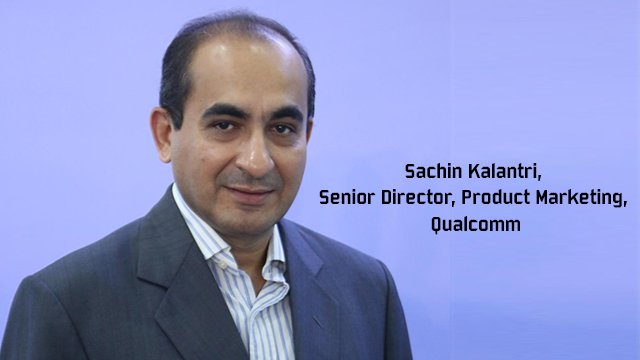 He also talked about the scope of innovation with 5G and how it enables wider use case. “5G also enables new forms of network architectures based on ORAN. This presents with an opportunity to create world class local Infra OEM ecosystem that not only caters to India needs but also participation in global opportunities,” Kalantri elaborating on Qualcomm’s focus.
He also talked about the scope of innovation with 5G and how it enables wider use case. “5G also enables new forms of network architectures based on ORAN. This presents with an opportunity to create world class local Infra OEM ecosystem that not only caters to India needs but also participation in global opportunities,” Kalantri elaborating on Qualcomm’s focus.
Another vital cog of India’s 5G future is MediaTek. The manufacturer has been quick to tap into the demands of the market, developing value-centric Dimensity 5G chipsets that power a wide range of smartphones under Rs 20,000 in the country right now. “5G has ushered in a new era of digital transformation, and MediaTek has been a frontrunner in the 5G domain, unveiling our 5G modem in 2019 itself,” said Anku Jain, Managing Director, MediaTek India.
 But the company has got the acumen to build the technology to power much beyond mobiles.” We are bolstering our telecommunication infrastructure and capabilities to empower customers to benefit from new use cases and applications,” Jain detailed.
But the company has got the acumen to build the technology to power much beyond mobiles.” We are bolstering our telecommunication infrastructure and capabilities to empower customers to benefit from new use cases and applications,” Jain detailed.
The latest GSMA report called India: Becoming 5G-ready points out that 5G connections in India are forecast to reach 88 million by 2025, which is equivalent to around 7% of the total connections base in the country. Add to that, India has a thriving startup ecosystem. This ecosystem is at the forefront of driving digital disruption and impactful innovation. The ecosystem is already focusing on driving new 5G use cases which will become real as 5G networks get rolled out in India. And the likes of Qualcomm and MediaTek will have a large role to play in the development and proliferation of devices in the market.
Making 5G devices affordable
Once the technology and hardware platform is afoot, phones makers can look into making their products affordable for consumers. When 4G came to India, the progression was scattered, with brands equally focused on existing 3G network, as well as building up for 4G standards. This brought about a change in the market scenario, and helping Chinese brands like Xiaomi, Vivo and OPPO up the ladder, at the expense of local manufacturers like Micromax, Lava and more.
But fast-forward to 2021, and the 5G induction seems more fine-tuned, paving the way for both the telecom operators as well as the handset markets to work hand-in-glove and give us quality products from day zero, which is before the network actually rolls out.
As per the analysts at Counterpoint Research, “5G networks are expected to go live in 2022 H1, and the compatible smartphones have been available in the market, starting from the premium segment, since 2019.” However, things have dramatically changed for good, paving the way for chipset makers to innovate and come out of hardware solutions that power smartphones at a lower price point. “MediaTek is prepared and committed to democratizing 5G, and we have an entire range of 5G solutions catering to the high-end, mid-tier, and mainstream markets, Jain adds.
Affordability plays a big role in success of a brand in India. And for the price-conscious buyers, it is imperative that 5G phones come to the reach of their pockets. Fortunately, things have moved down the price chain already, allowing more people to experience devices with the so-called 5G-enabled hardware.
And from a manufacturer’s point of view, things have picked up because of the necessary support from the ecosystem. Counterpoint Research says the price of entry-level 5G devices has come down by 40% in the last 6 months and the cheapest phone with 5G now costs less than Rs 15,000 (approx. $200). The catalysts for this change have been brands like Xiaomi, Realme, Poco and more. “In the last year, we have launched a range of 5G smartphones across price points such as smartphones from the Mi 10 series, and very recently from the Mi 11 series,” Xiaomi spokesperson highlighted.
The company has observed that consumers in the sub Rs 25,000 price bracket tend to use smartphones for 12 months or so, which is rather intriguing. Trends like this mean that by the time 5G comes to India, people will have to upgrade once again, giving them the best experience of connectivity. “In the midrange and entry-level segments, smartphone specs get outdated at a faster pace given the rapid pace at which technology advances.”
But Xiaomi promises the day 5G is commercially available, it will be ready with devices to cater to the rising demand in the country. All these estimations direct us to the possibility that by 2022 most of the new devices in this segment will be 5G. No wonder the GSMA report says the size of the Indian market and the rapid adoption of smartphones mean it will become the second largest smartphone market with installed base of almost 1 billion devices by 2025.
Bringing advanced features
The best thing about advancement in technology is that more premium features trickle down the price chain. For instance, if you wanted a phone with AMOLED screen, supporting high refresh rate, along with a high megapixel cam[1]era and fast-charging battery, you would have easily had to shell out close to Rs 50,000 few years back. But with technology developing at a rapid pace, all these features are now readily available on a hardware that costs half of what you paid in 2018. It’s not just the foresight of 5G that has catapulted the growth. The industry as a whole realises the potential of earning much more when 5G launches in the country. After all, with high-speed network connectivity, your content demand sees a big upgrade, from Full HD to 4K or even 8K quality videos. Online gaming is another beneficiary of the evolution, allowing more people to join the bandwagon.
Video calling becomes the norm, and introduction of Augmented Reality into the mix takes the technology sphere to a futuristic level. By giving exposure to high-end features at a pocket-friendly price, manufacturers are hoping that a phone becomes a vehicle that propels the demand for 5G data bandwidth, giving them the necessary encouragement to charge for various services that are being availed by the consumer. If 4G was the catalyst for growth of data consumption in India. The industry now has the tools to make 5G a bigger success with a full-fledged ecosystem already in place to take advantage of what is to come in the near future.
Affordable 5G phones available in India
- POCO M3 Pro 5G
POCO M3 Pro 5G is one of the most afford[1]able 5G capable smartphones in the mar[1]ket. It supports the latest connectivity network with the help of the mid-range MediaTek Dimensity 700 chipset clocked at 2.2GHz. Additionally, it features a big 90Hz display for content consumption. You also have a large capacity battery that handles all your activities on the de[1]vice and supports 18W fast charging. For imaging purposes, the M3 Pro 5G comes with a triple rear camera that consists of 48MP + 2MP and 2MP sensors. Both the SIM slots support the 5G network. POCO M3 Pro 5G costs Rs 13,999.
2. Realme 8 5G
Realme 8 5G is a mid-range device for buyers that also come powered by the MediaTek Dimensity 700 chipset. You can get the Realme 8 5G with up to 8GB RAM and 128GB internal memory that is further expandable. The base model of 4GB + 64GB costs you Rs 14,499 right now. Again, this device also has a 48MP triple rear camera that is accompanied by a 2MP macro lens and a 2MP depth sensor. The phone sports a 6.5-inch LCD display with support for a 90Hz refresh rate. And finally, Realme 8 5G packs a 5,000mAh battery that also gets an 18W fast charging speed. Realme 8 5G is priced at Rs 14,499 in India.
- Redmi Note 10T 5G
Xiaomi has multiple phones in this price range but with Redmi Note 10T 5G model, it serves the basic purpose of offering 5G connectivity using both the SIM slots. This is yet another device which uses the MediaTek Dimensity 700 chipset, paired with up to 6GB RAM for buyers. And for storage, you can either add the second SIM or use it for memory expansion. This 5G phone also features a triple rear camera, which has a 48MP as its primary sensor, along with a 2MP macro and 2MP depth sensor. The phone gets a 6.5-inch Full HD+ display with a 90Hz refresh rate and Corning Gorilla Glass 3 protection. For backup, you have a 5,000mAh battery that supports 18W fast charging. You can buy the Redmi Note 10T 5G for Rs 14,499.
- OPPO A53s 5G
OPPO is also using the MediaTek Dimensity 700 chipset to power the A53s 5G smartphone in the country. Compared to the others you just saw, this device has features that are slightly under[1]whelming for the price. The phone has a standard 6.52-inch HD+ display that gets a 60Hz refresh rate. You can get the phone in 6GB and 8GB RAM options, with 128GB internal storage. The device gets a 13MP triple rear camera along with a 2MP depth and 2MP macro sensor in tow. Lastly, the OPPO A53s comes load[1]ed with a 5,000mAh battery that only supports 10W charging speed. OPPO has priced the A53s 5G at Rs 14,990 in the country.
- Realme Narzo 30 5G
Yet another 5G phone that packs the MediaTek Dimensity 700 chipset in the market. The Realme Narzo 30 5G features are similar to the Realme 8 5G, with a 90Hz LCD display, 48MP triple rear camera, Realme UI over Android 11 out of the box, and a 5,000mAh battery loaded inside. Design-wise, there are a few changes that might appeal to buyers. The phone is also lightweight and offers 6GB RAM with 128GB internal storage that is further expandable using a microSD card. The built-in battery supports 18W fast charging. Realme Narzo 30 5G is available for Rs 15,999.
- Samsung Galaxy A22 5G
Samsung also makes a case for itself in this affordable 5G market with the new Galaxy A22 5G smartphone. But like other phones we just talked about, Galaxy A22 5G also uses the MediaTek Dimensity 700 chipset to give you the 5G connectivity support. The device comes with a 6.6- inch Full HD+ 90Hz display and runs on the One UI Core version built over Android 11 OS. The Samsung Galaxy A22 comes in options up to 8GB RAM and 128GB internal storage. On the imaging side, the best 5G phone in India under Rs 25,000 has 48MP triple rear cameras that also come with a 5MP ultra-wide sen[1]sor and a 2MP depth sensor. The built-in 5,000mAh battery supports 15W charging speed. Samsung has priced the Galaxy A22 5G at Rs 19,999.
- Vivo Y72 5G
Vivo offers the Y72 5G which is also powered by the MediaTek Dimensity 700 series chipset. The device features a regular 6.58-inch Full HD+ display and comes with a triple rear camera system that consists of a 64MP primary sensor, 8MP ultrawide sensor and 2MP macro sensor. The front display has a waterdrop notch. The Vivo Y72 5G packs a 5,000mAh battery that supports 18W fast charging. The hybrid SIM slot could be a deal-breaker if you ever want to use both the slots for 5G SIM. Vivo Y72 5G smartphone costs Rs 20,990 in India.
- Moto G 5G
Motorola is also using the Snapdragon 750G 5G chipset to power the Moto G 5G. It has a 6.7-inch Full HD+ display, 5G-ready SIM slot, 6GB RAM onboard, and 128GB storage that is expandable up to 1TB. It came with Android 10 during the launch, and now you can find it running on Android 11 with its new update. The phone packs a 5,000mAh battery that supports 20W Turbo Charge speed. For imaging purposes, Moto G 5G comes with a 48MP triple rear camera, accompanied by an 8MP ultra-wide and 2MP depth sensor. Motorola Moto G 5G can be bought for Rs 20,999.
- Mi 10i
One of the first phones in the market at this price, the Mi 10i 5G came out earlier this year with the Snapdragon 750G chipset. It features a 6.67-inch 120Hz display with Corning Gorilla Glass 5 protection on both sides. The other highlighting feature of this best 5G phone in India is the 108MP quad rear camera that also has an 8MP ultrawide sensor, 2MP macro and 2MP depth sensor. And on the front, you get a 16MP selfie camera. And if this isn’t enough, the phone packs a large 4820mAh battery that gets 33W fast charge support. Mi 10i phone launched in India for Rs 21,999.
- Samsung Galaxy M42 5G
Samsung has gradually entered the fray with the Galaxy M42 5G. It powered by the Snapdragon 750G chipset that brings 5G support. The phone gets a 48MP quad rear camera setup that includes an 8MP ultra-wide, 5MP macro and 5MP depth sensor. While on the front you have a 20MP selfie camera. The device sports a 6.6-inch HD+ Super AMOLED display with a water[1]drop notch. You can get it with 6GB or 8GB RAM, and a shared SIM slot offers you storage expansion as well. Finally, you have the 5,000mAh battery supporting 15W charging speed. Samsung also offers the Galaxy M42 5G phone for Rs 21,999 in India.


